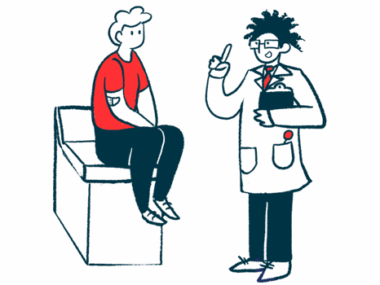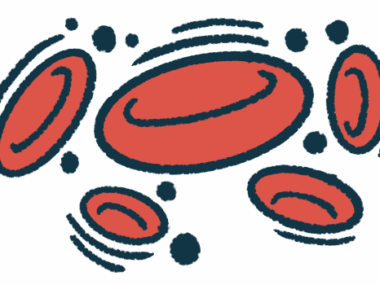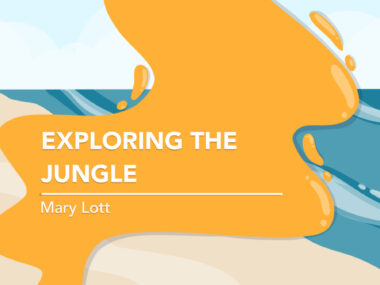Grounding myself helps me in recovering from a panic attack
Breathing and sensory-based strategies help this CAD patient find peace
Written by |

My breath was short and quick. Pokey, my dog, jumped up on the bed and licked my face. It didn’t help. Thoughts continued to swirl through my brain, not settling down into one focus. I was developing a panic attack.
Focusing my gaze on one spot on the far wall, I forced myself to slow my breathing. In one, two, three, four, five. That was all I could manage before I had to breathe out. Again. This time I got to six.
“That is my motorcycle helmet. I hate it.” I intentionally speak this sentence in my head. I look at something else. “Vases for bougainvillea. The supersoft throw blanket. The anti-theft grill work on the window. The dresser I had built a few years ago.” Listing five specific items in my line of sight helps bring me back to reality.
What triggered my panic
All this past week, well-meaning friends have been giving me advice concerning my health. What others don’t realize is that I have a tendency to absorb others’ emotions. But the absorption doesn’t stop with casual recognition. I internalize and then magnify those emotions. My brain immediately travels to a worst-case scenario.
That’s easy to do with cold agglutinin disease (CAD). There’s always something to concern me. I wonder if I’m hemolyzing, or having my red blood cells destroyed. Do I have a urinary tract infection? Is my CAD triggering my lymphoma again?
Since 2018, when I was diagnosed with CAD, I’ve developed coping mechanisms. If I hadn’t, my stress would magnify the problems of CAD.
Breathing and grounding
The first method I have to ease stress and panic attacks is controlled deep breathing. I breathe in through my nose to a slow count up to eight, hold my breath while counting to four, and exhale to a count of four. Then, I repeat over and over until my breathing and pulse return to more normal levels. That doesn’t always work immediately, so I combine it with other methods.
This past attack, I moved on to a grounding technique. It pulls my attention off my internal imaginings and places it on the physical world around me. I intentionally notice five things around me, then I say a sentence to myself about each item.
Then I pause and listen for four separate sounds. This could be Pokey barking, my neighbor’s music, my husband’s music-arranging program, or the air conditioner’s hum.
Next I stand up, take a few steps, and pick up a book. I riffle through the pages, enjoying the texture of the cloth cover and the rough feel of the paper. Setting this down, I look for two other things to pick up. It’s important that I engage my sense of touch to ground myself completely.
Next, I pick three odors to identify. It could be the musky, skunklike smell of a cuscus here in Papua, Indonesia. Perhaps someone is burning trash nearby. Or maybe there’s the wonderful smell of petrichor, or rain on the earth. I mentally verbalize these odors, then move on to the last sense to engage.
I’m always good for enjoying a snack. I hunt up a tasty slice of cheese or enjoy a few chicken nuggets. That covers the last sense to ground myself: taste. The point is to take up some time, occupy myself with tangible experiences, and focus on things other than what’s causing my panic.
This method usually slows my panic attacks to manageable levels. The problems aren’t solved, but I’m better able to think rationally.
Calming down
It’s easy for me to leap to worst-case scenarios. CAD requires me to be careful about exposing myself to germs, as the condition can be triggered by infections. When other people share their worries about me, I feel stress. Unfortunately, I don’t think clearly in those times.
The most important method I have for dealing with panic attacks is spending time focusing on God. I follow the guidance in Psalms 46:10, which says, “Be still, and know that I am God” (New International Version). After I’m still and waiting, I begin actively praying. I take out a list and pray blessings for specific people, places, and events. In the calmness that follows, my panic subsides.
Note: Cold Agglutinin Disease News is strictly a news and information website about the disease. It does not provide medical advice, diagnosis, or treatment. This content is not intended to be a substitute for professional medical advice, diagnosis, or treatment. Always seek the advice of your physician or other qualified health provider with any questions you may have regarding a medical condition. Never disregard professional medical advice or delay in seeking it because of something you have read on this website. The opinions expressed in this column are not those of Cold Agglutinin Disease News or its parent company, Bionews, and are intended to spark discussion about issues pertaining to cold agglutinin disease.







Susana Sabal
🥰❤️😘